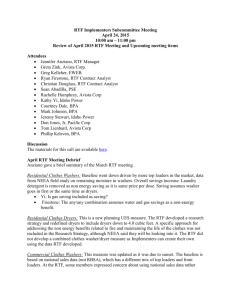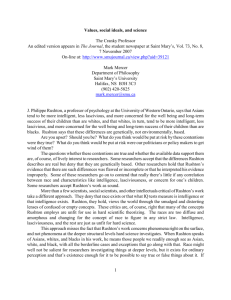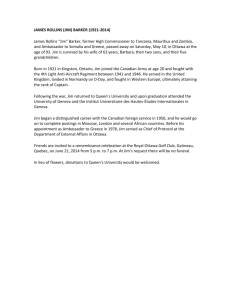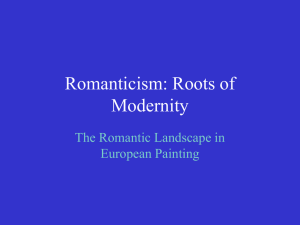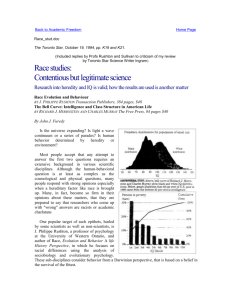Meeting Notes
advertisement
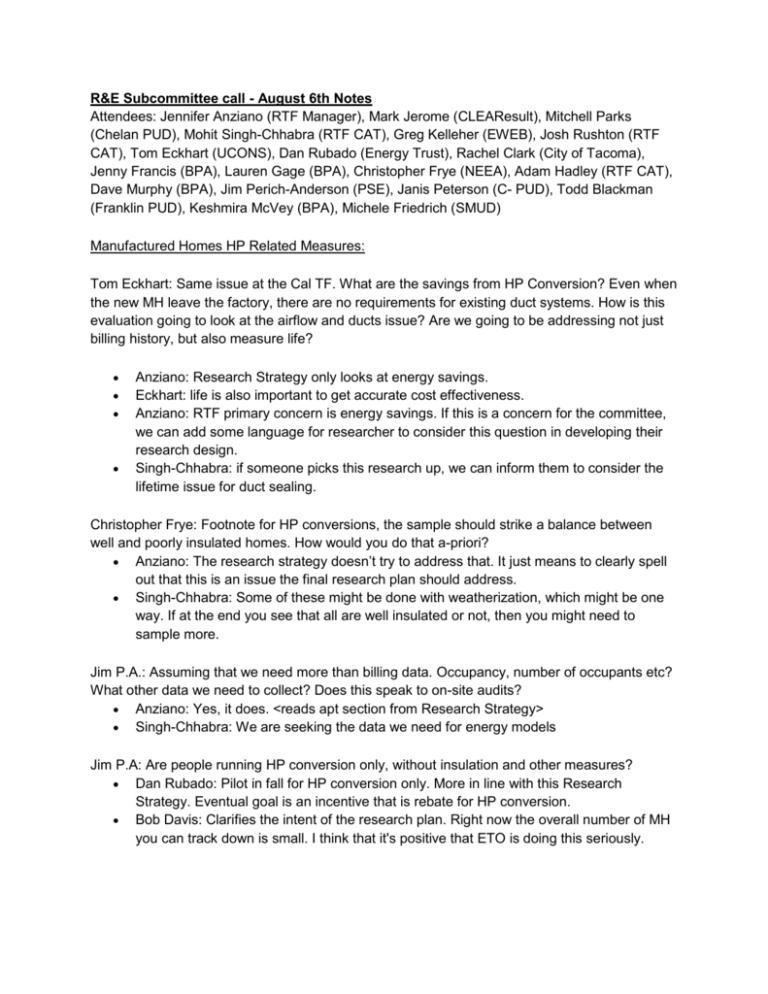
R&E Subcommittee call - August 6th Notes Attendees: Jennifer Anziano (RTF Manager), Mark Jerome (CLEAResult), Mitchell Parks (Chelan PUD), Mohit Singh-Chhabra (RTF CAT), Greg Kelleher (EWEB), Josh Rushton (RTF CAT), Tom Eckhart (UCONS), Dan Rubado (Energy Trust), Rachel Clark (City of Tacoma), Jenny Francis (BPA), Lauren Gage (BPA), Christopher Frye (NEEA), Adam Hadley (RTF CAT), Dave Murphy (BPA), Jim Perich-Anderson (PSE), Janis Peterson (C- PUD), Todd Blackman (Franklin PUD), Keshmira McVey (BPA), Michele Friedrich (SMUD) Manufactured Homes HP Related Measures: Tom Eckhart: Same issue at the Cal TF. What are the savings from HP Conversion? Even when the new MH leave the factory, there are no requirements for existing duct systems. How is this evaluation going to look at the airflow and ducts issue? Are we going to be addressing not just billing history, but also measure life? Anziano: Research Strategy only looks at energy savings. Eckhart: life is also important to get accurate cost effectiveness. Anziano: RTF primary concern is energy savings. If this is a concern for the committee, we can add some language for researcher to consider this question in developing their research design. Singh-Chhabra: if someone picks this research up, we can inform them to consider the lifetime issue for duct sealing. Christopher Frye: Footnote for HP conversions, the sample should strike a balance between well and poorly insulated homes. How would you do that a-priori? Anziano: The research strategy doesn’t try to address that. It just means to clearly spell out that this is an issue the final research plan should address. Singh-Chhabra: Some of these might be done with weatherization, which might be one way. If at the end you see that all are well insulated or not, then you might need to sample more. Jim P.A.: Assuming that we need more than billing data. Occupancy, number of occupants etc? What other data we need to collect? Does this speak to on-site audits? Anziano: Yes, it does. <reads apt section from Research Strategy> Singh-Chhabra: We are seeking the data we need for energy models Jim P.A: Are people running HP conversion only, without insulation and other measures? Dan Rubado: Pilot in fall for HP conversion only. More in line with this Research Strategy. Eventual goal is an incentive that is rebate for HP conversion. Bob Davis: Clarifies the intent of the research plan. Right now the overall number of MH you can track down is small. I think that it's positive that ETO is doing this seriously. Anziano: other Qs or suggestions for refining this strategy? Davis: What is envisioned for billing analysis? In the past it has been challenging to find clean signatures for the non heating month with the usual method. It is frustrating. Now in conversion you are going to see a pretty big difference in heating energy consumption. May not be very important to state the type of billing analysis, but that has been a main challenge. o Anziano: There was language in the research strategy that we will put it back in. It refers to taking lessons learned from previous studies, like the 2005 study. o Davis: The 94-95 MAP study may describe the challenges better. Make sure we are ready to try some new things. Rushton: Is the HP signal too weak? o Davis: With a small sample, you are depending on getting an accurate hold on the base heating months. In the original MAP groups, there were a lot of rural sites and also some cooling. Even though you knew something about usage, there was uncertainty. We have not even talked about wood yet. 10 years later we had more success but the number of cases were limited. Conversions aren’t a very common measure for MH. We have the chance to figure this out in our region. Singh-Chhabra: What do you think about the sample size Bob? o Davis: What is in here is a good start. We do want variety in house insulation levels. Michelle Friedrich: Some of the utilities have interval meters now, EWEB, ETO and PGE. If PGE has interval meters then this may be a good way to test the billing analysis. Rubado: We don’t currently have access to that data, but are working to try to get it for certain cases. Friedrich: I suggest you work with utilities that have interval meter data. Anziano: Any other thoughts? Does the group feel this is a reasonable strategy? Greg Kelleher: Is this heating zone 1 specific or across all heating zones? Singh-Chhabra: Its across. Friedrich: What is the savings order of magnitude for each one of these measures? That will help understand how much money to put in for these measures. Anziano: the savings are being put together. In June we realized that we do not have a model of the savings that is calibrated. We will have it as a package. Davis: back of the envelope, conversion is 4000 - 5000 kWh. Upgrade is under 1000 kWh. Around a 100,000 or so MH can participate. Anziano: We will present the research strategy with some tweaks suggested here and the planning estimates. For remaining potential, we can work with potential funders when they are interested in taking the measure on. Residential - Advanced Power Strips: Rubado: ETO is testing the load-sensing for home entertainment systems in multifamily as well. Dave Murphy: Clarify if we are pursuing all four measures. Anziano: We are bringing all four as planning (or provisional where we can point to sponsored research), but the region may not take up research for all of the paths and some may never get to proven. Friedrich: CA is studying some of these advanced power strips. We have interval meters and can compare bills from these homes. Let’s make sure we don't duplicate efforts. Rushton: What kind of research are we talking about? I was worried that it may strike people as strange that these are still measures planning even though these measures have been studied in other regions. We have some qualms with those studies. Are you talking about a pre- post- study with this data? Friedrich: I don't have specifics yet. I guess the concern is that if you go in and direct install these power strips and show the customers how to use them, you will get a different answer than doing a store give-away. Rushton: It is a critical point that we called out in the research strategy. The research really needs to call out the delivery mechanism that needs to be studied. Jim P.A.: One challenge we have is the pace that these measures change and the potential configuration of these measures going forward. Are we going into this with a clear understanding of the features of these devices going forward? Rushton: Good question, there is uncertainty about the measures’ configuration being installed now. Friedrich: Jim, does your utility have interval meters? Jim P.A: Yes. We are able to collect daily data. Anziano: In this strategy we have tried to call out a path forward with best available data and knowledge. The research is not limited to these paths. Jenni Francis: Is this pre/post for direct install. Rushton: We want the delivery to speak to what programs are doing, so this might have some kind of adjustments. We are trying to leave wide room for the discretion of research sponsors. There are a few paths for adjusting install rate, for example baking it into the savings estimate or adjusting it with delivery verification. We do not want to prescribe how this would interact with the research design. Davis: Metering for two weeks at a minimum is inadequate. Especially if this is not direct install. Rushton: This is something I am worried about it too. I have heard that people's living circumstance change and that interferes with long metering times. Maybe have three or four weeks? Davis: Three, preferably four weeks is better. Rushton: I will make it clear that if metering period is too long we may get sample attrition. Friedrich: I want to make this study low cost and get better data. Only include pre- and postdata, and include utilities that can get daily data. I don't think this is a direct install measure for the most part. I also think there is a seasonal effect here. Those 60 homes being metered should be staggered through the year. Jim P-A: I have a question to understand if there is any usability testing being done, maybe through focus groups? This could be done is to understand how these devices are used by customers at home. Anziano: Does the research strategy intend to determine a typical configuration? Rushton: Definitely. That is one of the considerations while writing the research strategy. I wonder if I should be more prescriptive on this detail in the research strategy. Anziano: I think for this one, perhaps a better path is to make sure the point on program delivery is not lost. We need to point to the considerations need to be taken with respect to the path without being too prescriptive. Anziano: We have gotten great feedback on question of sampling. Would it be doable to incorporate the feedback from today and get a final round of input via email to make sure we are capturing the various points? Friedrich: the sample size seems small unless you are looking at interval data. Jim P.A: We really may want to think about expanding this research, not just focusing on advanced power strips. Anziano: The strategy focuses on these products because that is the measure it is tied to, but it definitely makes sense for prospective funders to think about when developing their research.
